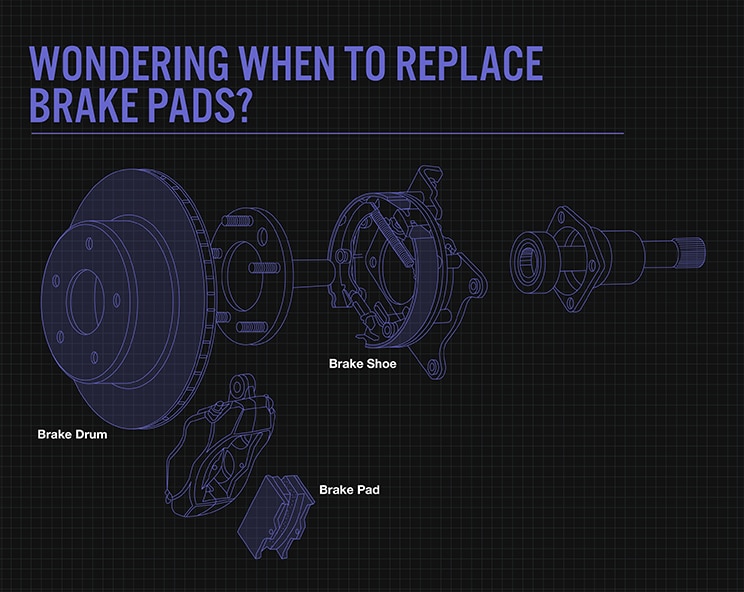GENEVA, SWITERLAND & TOKYO, JAPAN. 10 March 2023 The Fédération...
Read MoreMaking sure your brake pads are in proper working condition, and replacing them when the time is right, won’t just save you money in the long run. It can also potentially save your vehicle, or even your life in an accident. But how do you know when to replace your brake pads? What are brake pads for? Let’s take a closer look at the how’s, what’s, and why’s of replacing brake pads on your vehicle.

Improper wheel or tire alignment can cause your tires to wear unevenly and prematurely. Here are some specific types of undue tread wear attributable to misalignment:
Generally, the first indication any driver will notice is a squealing, screeching, or whining noise when the brakes are engaged. This sound is caused by a small, metallic shim indicator that’s embedded in your brake pad for just this purpose. When you hear it regularly while braking, it’s likely time to bring your car in to a brake specialist for an inspection.
When brakes are exposed to wet, damp conditions, such as after a rain storm, a thin layer of dust can form on the brake pads and cause a very similar screeching sound while braking. If a sound disappears after the first few times you use your brakes, that’s a good indicator that it was just a bit of rust built up on the brake pad and not the brake pad needs to be replaced.
This strain of tread wear means the inside or outside of the tread is significantly more worn than the center of the tread. As its name implies, positive or negative camber causes this type of wear.
If you hear a deep, low noise that sounds like metal grinding or a rumbling growl, that can be a sign that not only are your brake pads worn away, but that your brake discs and calipers are making contact. Since this metal on metal contact can very quickly cause even further damage in your braking system, you should bring your vehicle in to a service shop as quickly as possible if you hear this type of noise.
Some vehicles have an indicator light on the dashboard that will signal when it’s time to replace the brake pads. Check your owner’s manual to see if your vehicle comes equipped with the low-pad warning system. Remember that if the light does come on, you’ll need to have your mechanic replace the light sensors as well as the brake pads.
Brake pads are generally thought to be good from anywhere between 30,000-35,000 miles. However, the real answer to how long brake pads can last will vary from vehicle to vehicle and from driver to driver. For example, if you tend to drive the most often in urban areas or in heavy commuter traffic, you’ll be engaging your brakes a lot more frequently than someone who drives in rural locations or on highways. Some people also tend to “ride the brake,” meaning they press and depress their brakes more habitually than other drivers, causing the brake pads to wear away more quickly.
With a little attention and forethought, it can be easy to know when to replace brake pads on your vehicle.
GENEVA, SWITERLAND & TOKYO, JAPAN. 10 March 2023 The Fédération...
Read MoreJust got your driver’s license? Congratulations! You’ve officially joined some...
Read MoreIn rainy weather, driving conditions can become dangerous pretty quickly....
Read More© 2023 All Rights Reserved, Philippine Allied Enterprises Corporation

The exclusive distributor of Bridgestone tires in the Philippines